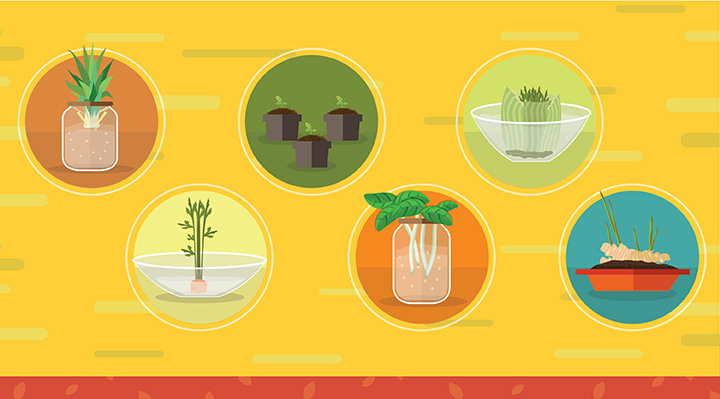
Want to take your commitment to local foods to the next level?
Look no further than your own trashcan or compost bin. While many people think of food scraps—such as carrot tops, onion bottoms, and the tips of romaine hearts or pineapples—as waste (or future fertilizer), these items can be enjoyed all over again.
Reduce waste, save money, and build self-sufficiency with this handy guide to regrowing food from scraps.
1) Avocado
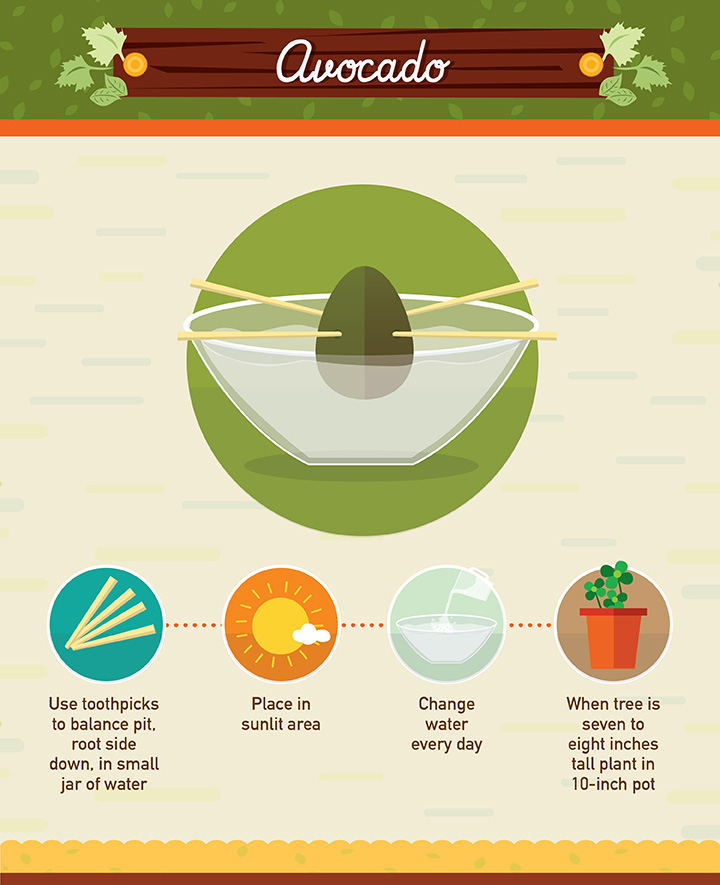
Don’t throw away your avocado pits. Use them to grow an avocado tree.
{Try this great recipe for Avocado Brownies}
Not every pit will produce roots, so your best bet is to try two or three pits at once. Start by cleaning off the pit, removing any remains by rinsing it under cold water and then toweling it dry. Push four toothpicks into the pit, evenly spaced apart. Use the toothpicks to balance the pit over the top of a glass jar (feel free to salvage a wide-mouthed jar from the recycling bin), making sure the pit is pointy side up.
Fill the dish or jar with water, enough that about half of the pit is submerged. Place the dish/jar in a sunlit area and change the water every day or so. After approximately three to six weeks, the top of the pit will begin to split open. Several weeks after that, a stem, leaves, and roots will begin to grow.
A few weeks after this growth occurs, you should see leaves. Be patient. In approximately three months, when your tree is around seven to eight inches tall, plant it in a ten-inch pot with adequate drainage.
Fill the pot with soil, and press your avocado sapling into it, root-side down (so the top half of the pit remains uncovered). Keep the sapling in a sunny area and water it regularly.
{Instructions via The Hungry Mouse}
2) Basil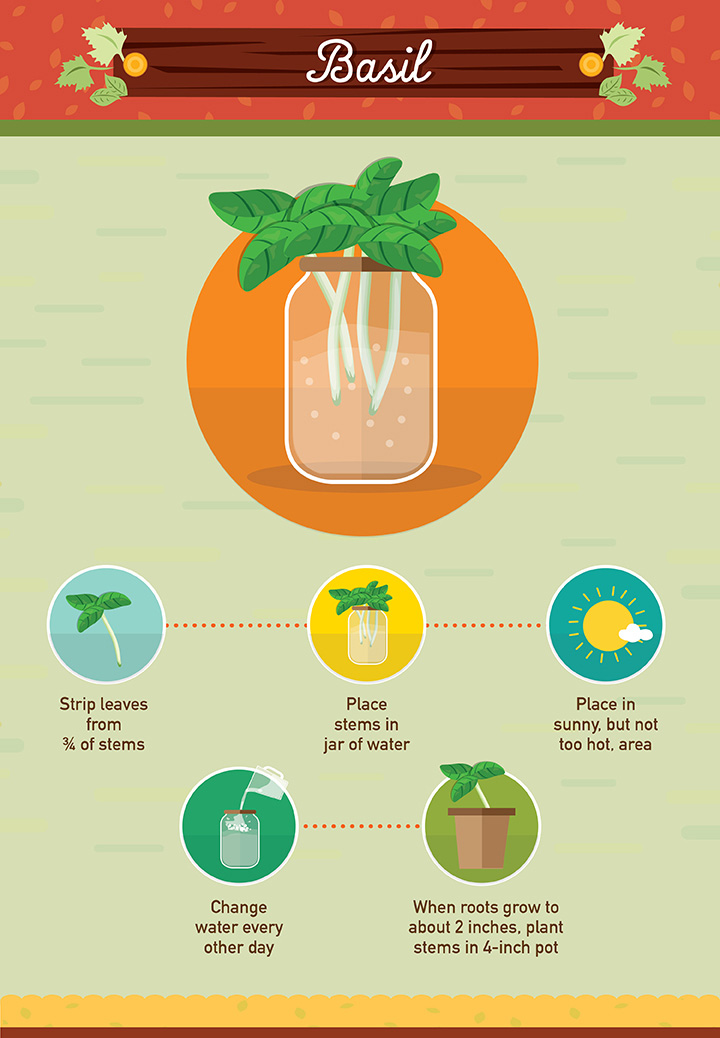
Liven up pastas dishes, sauces, and pizzas, all for the price of one basil plant.
Select several four-inch stems from a bunch of basil. Then strip all leaves from about 75 percent of each stem with a sharp knife. Put the stems in a jar of water and place in a sunny (but not too hot) location. Change the water every other day. You’ll soon notice new roots form along the stems.
When the roots grow to about two inches in length, plant the individual stems in a four-inch pot. Keep the pot in an area that gets at least six hours of sunshine each day, and water regularly. Harvest when the plants are full grown, but do not to remove all the leaves at one time.
{Instructions via The Urban Gardener}
Take a break to listen to this Green Divas Foodie-Phile podcast about nutrition packed dried basil seeds…
3) Bok choy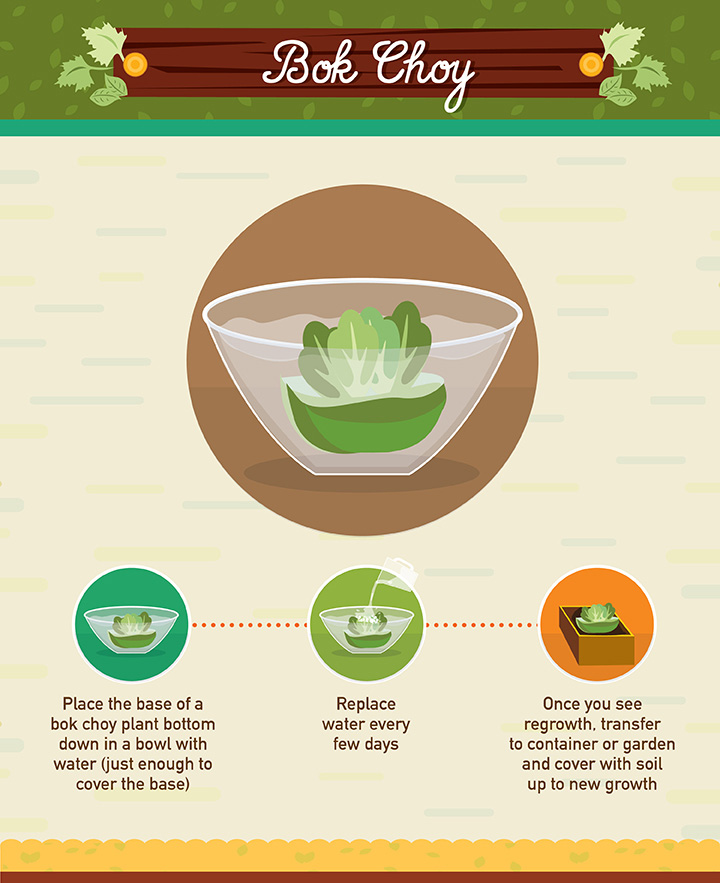
Cut off the base of a bok choy plant and place it in a bowl bottom-down. Add a small amount of water in the bowl. Cover the whole base with water, but do not add more than 1/4 inch above the base. Replace water every few days. In about one week, you should see regrowth around the center of the base.
Once you see regrowth, transfer the plant to a container or garden. Cover everything except the new growth with soil. Your bok choy should be full grown and ready to harvest in approximately five months.
{Instructions via My Heart Beets}
4) Cabbage
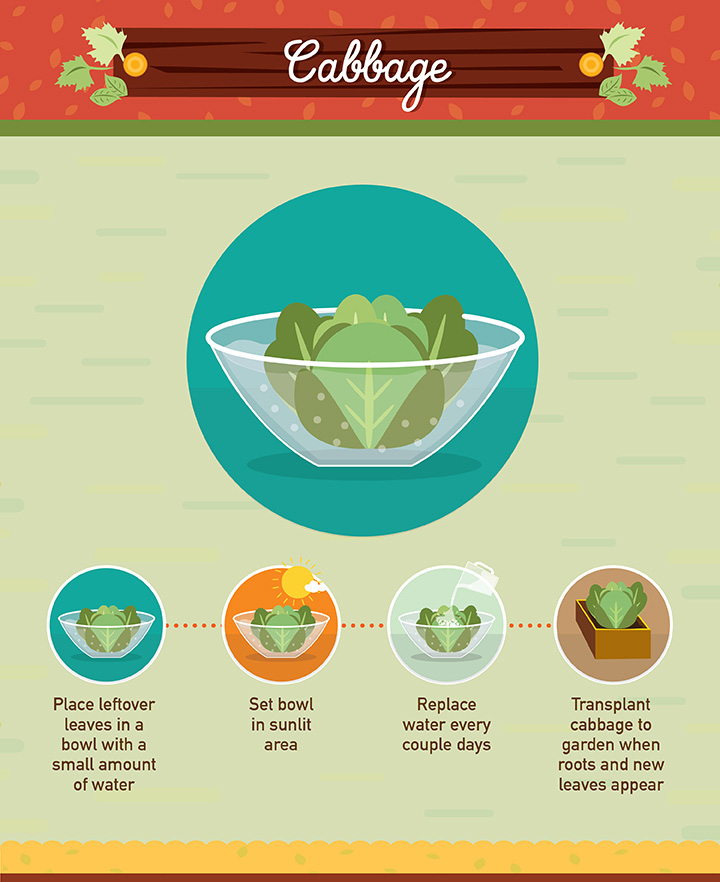
Grow your very own cabbage patch for cheap. Place leftover leaves in a bowl and add a small amount of water in the bottom. Set the bowl in an area that receives a lot of sunlight. Every couple of days, replace the water and mist the leaves with water.
When roots and new leaves begin to appear, transplant the cabbage into a garden. Harvest when fully grown, then repeat with the new leaves.
{Instructions via DIY & Crafts}
5) Carrot greens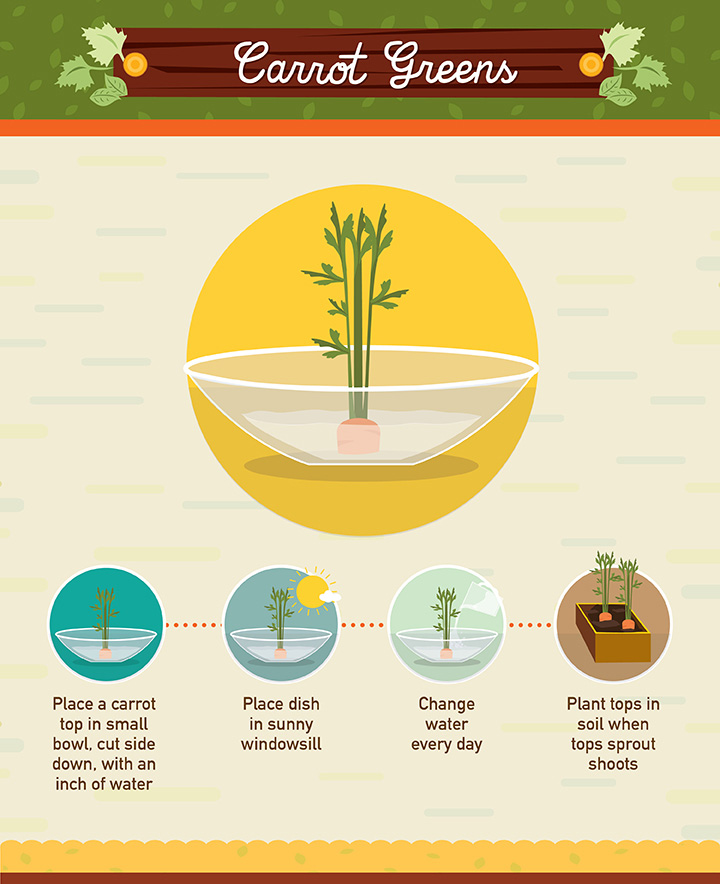
Instead of defaulting to the compost, use carrot tops to grow healthy carrot greens. Place a carrot top or tops in a bowl, cut side down. Fill the bowl with about an inch of water so the top is halfway covered. Place the dish in a sunny windowsill and change the water every day.
The tops will eventually sprout shoots. When they do, plant the tops in soil, careful not to cover the shoots. Harvest the greens to taste. (Some people prefer the baby greens; others prefer them fully grown.)
{Instructions via Gardening Know-How}
[Read: DIY Pesticides for Your Garden]
6) Celery
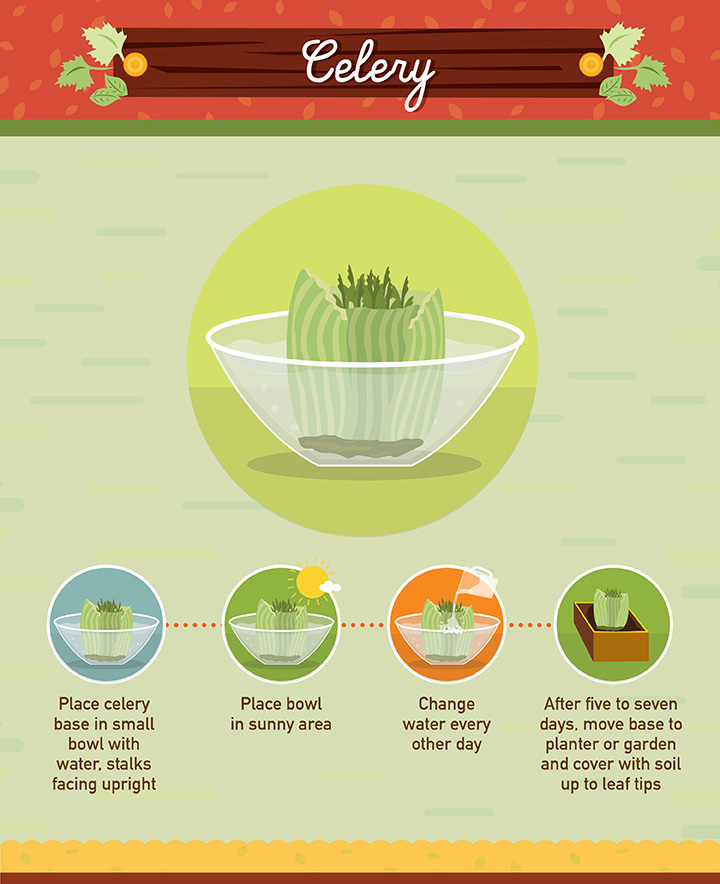
Rinse off the base of a bunch of celery and place it in a small bowl or similar container (any wide-mouthed, glass, or ceramic container should do). Fill the container with warm water, cut stalks facing upright. Place the bowl in a sunny area. Leave the base as-is for about one week and change the water every other day.
Use a spray bottle to gently mist the plant every other day. The tiny yellow leaves around the center of the base will grow thicker and turn dark green.
After five to seven days, move the celery base to a planter or garden and cover it with soil, leaving the leaf tips uncovered. Keep the plant well watered. You’ll soon notice celery leaves regenerate from the base, as well as a few small stalks. Harvest when fully grown, then repeat the process.
{Instructions via 17 Apart}
7) Cilantro
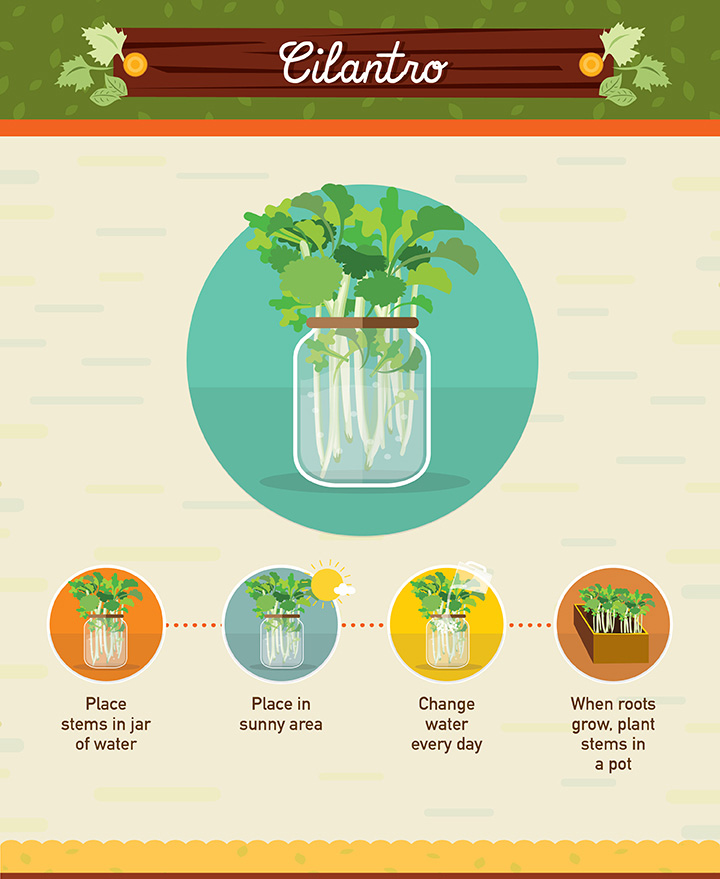
Just like basil, cilantro can regrow roots, and grow new plants once replanted. Simply place cilantro stems in a bowl of water, put the bowl in a sunny area, and change the water every other day.
Once the stems sprout plenty of roots, plant them in a pot. Expect new shoots to come up in a few weeks. In a few months, you’ll have a full-grown plant. Harvest leaves as needed, but be sure not to strip a stem of all its leaves at one time.
{Instructions via Food Hacks}
8) Garlic sprouts
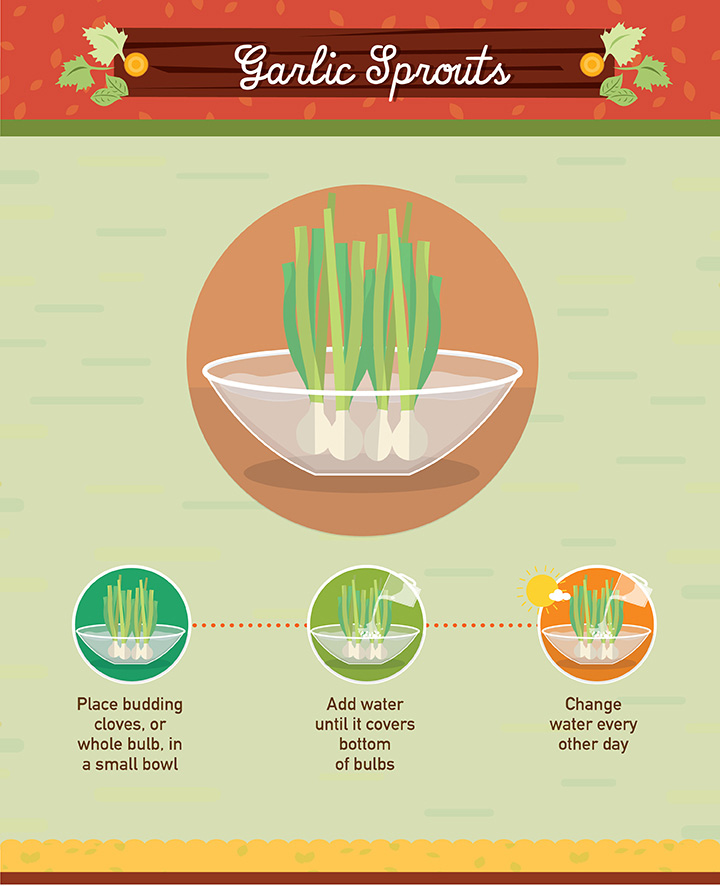
While you may not be able to grow garlic bulbs, you can grow garlic sprouts—also known as garlic greens—from a clove or bulb. Place a budding clove (or even a whole bulb) in a small cup, bowl, or jar.
Add water until it covers the bottom of the container and touches the bottom of the cloves. Be careful not to submerge the cloves in order to avoid rot. Change the water every other day and place in a sunny area.
After a few days, the clove or bulb will start to produce roots. Sprouts may grow as long as ten inches, but snip off the greens once they’re around three inches tall. Just be sure not to remove more than one-third of each sprout at one time. They’re tasty on top of baked potatoes, salads, in dips, or as a simple garnish.
{Instructions via Simple Daily Recipes}
9) Ginger
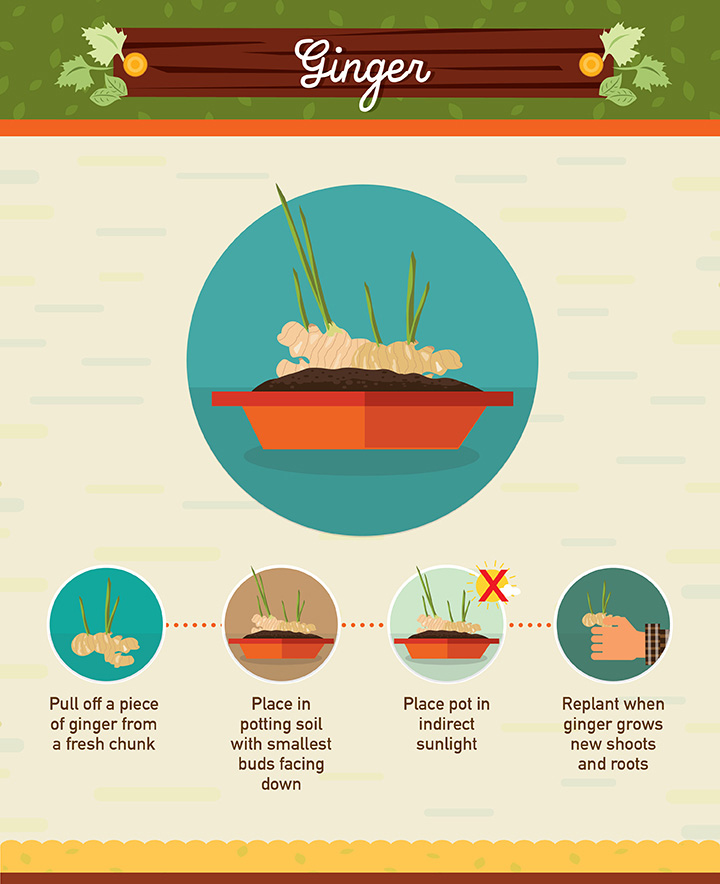
Fresh ginger is great to spruce up soups or stir fries, but it can also be pricey. Have your ginger and grow it too from an existing rhizome. Just pull off a piece of ginger from a fresh chunk and place it in potting soil with the smallest buds facing down. Plant ginger in a garden plot or planter that receives only indirect sunlight. The ginger will grow new shoots and roots.
When it’s ready to harvest, pull up the entire plant, including the roots. Remove a piece of the rhizome and re-plant again to continue reaping the rewards.
{Instructions via Wake Up World}
10) Green onions, leeks, and scallions
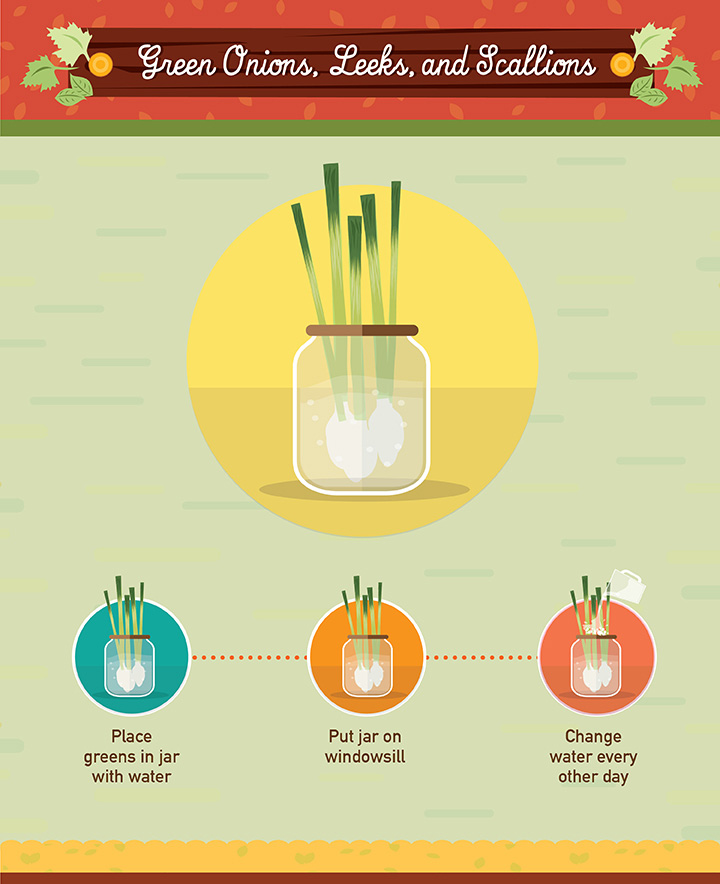
Instead of tossing the green part of these veggies, use them to grow more.
Place the greens in a cup or recycled jar filled with water. Put the cup or jar on a windowsill and change the water every other day. In about a week you should have a new green onion, leek, and/or scallion to add to your supper. Harvest when fully grown—just make sure to leave the roots in the water.
{Instructions via Living Green Magazine}
11) Hot peppers
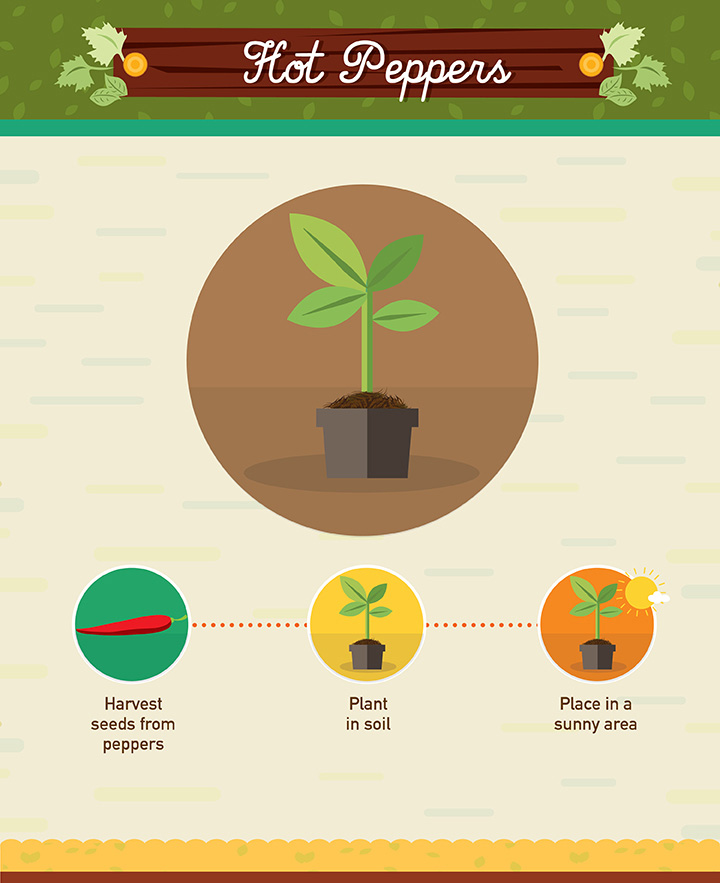
Harvest the seeds from your favorite spicy peppers and plant them in soil in a sunny area. Peppers tend to grow fast, so get your pickling materials ready. Once you have a new crop, save the seeds so you can repeat the process.
{Instructions via Living Green Magazine}
12) Lemongrass
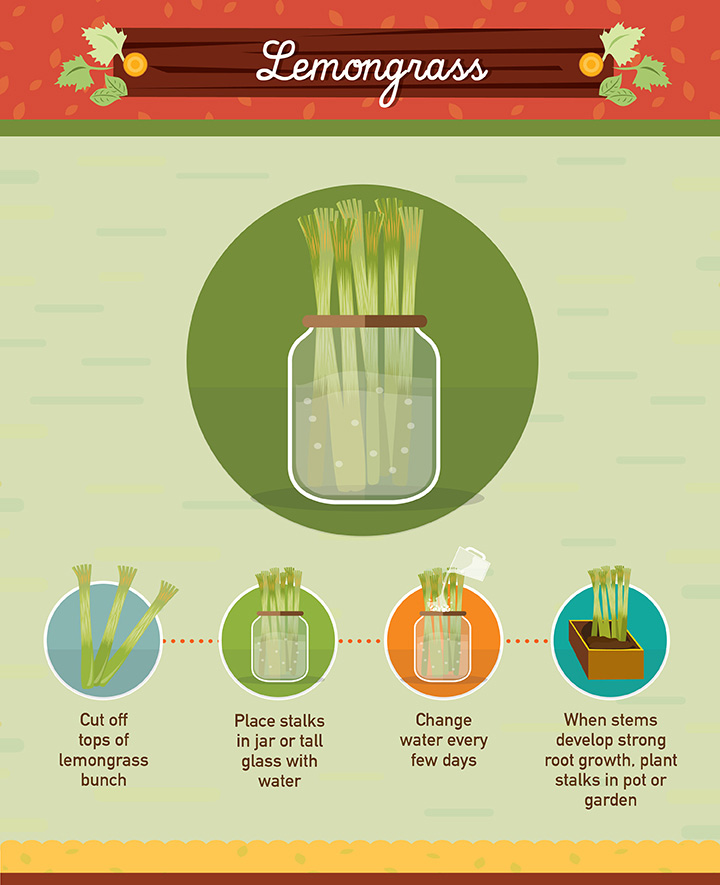
A frequent component of Thai dishes, lemongrass is a great addition to marinades, stir fries, spice rubs, and curry pastes.
To grow your own from scraps, cut off the tops of a bunch of lemongrass and place the stalks in water. Change the water every few days. In approximately two or three weeks, you should see new roots.
When the stems have developed strong root growth, plant the stalks in a pot or garden (preferably in an area that receives lots of sun). Because lemongrass needs to stay warm year round, plant the stalks in a container that can be moved inside during the winter months. Harvest lemongrass once it reaches one foot in height; just cut off the amount you need, being careful not to uproot the plant.
{Instructions via Suited to the Seasons}
Pingback: Links to Inspire | spidermonkeywrites